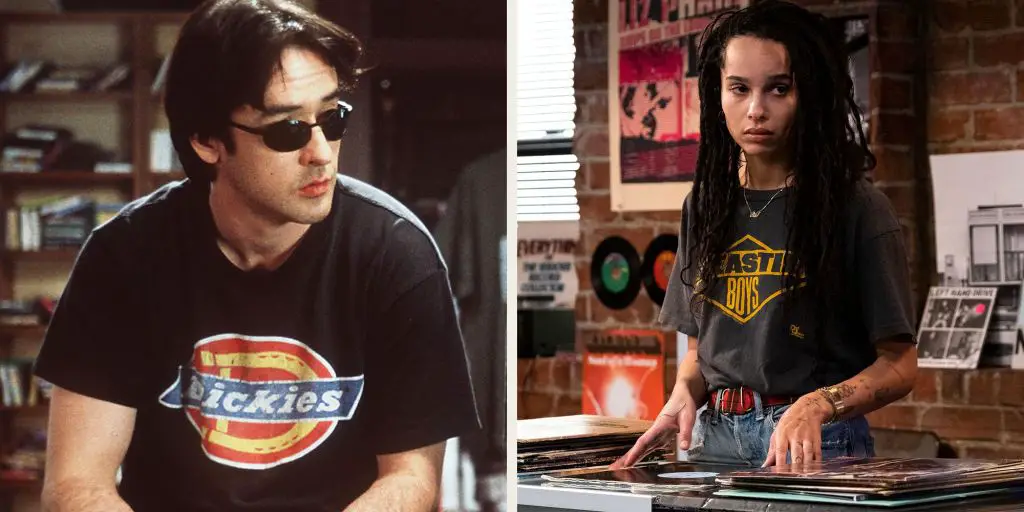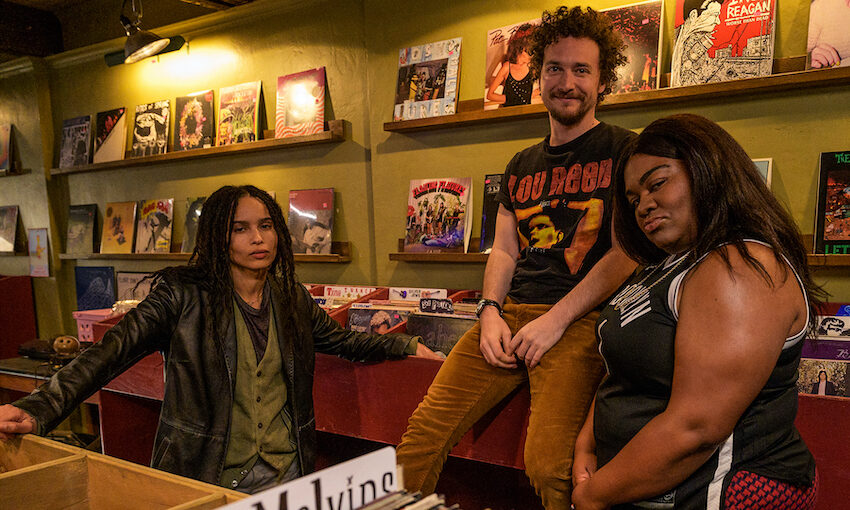All images courtesy of Getty Images

By Andrew Daly
andrew@vinylwriter.com

I’m twenty years old. I’ve just read the opening lines of Nick Hornsby’s novel High Fidelity for the first time. I’m hooked. I knew then and there that this was something that would require repeat readings for the rest of my life. I suppose it was only fitting, as this is the same story of my relationship with music and vinyl in general. High Fidelity examines the daily struggles of “professional appreciator of music” Rob and his group of underachieving friends, Barry and Dick, as they spend their days working at Rob’s fledgling store, Championship Vinyl.
After I finished the book, I, of course, sought out the on-screen rendition of High Fidelity. The story was more or less faithful to the source material, which I was alright with given how much I loved the novel in the first place. When I recently became aware that Hulu would be re-booting High Fidelity as a series, I became excited. Yet, I wondered if they too would remain faithful to the novel, or if they would not only re-boot this modern-day classic but remix it all together?

As a life-long lover of both music and vinyl, High Fidelity in all its forms appeals to me. That aside, what has continued to draw me back in is its intertwining of the human condition with music. The story examines Rob’s relationship with music on vinyl, and the means by which it has defined his life, and relationships. For those of us prone to introspection, it’s a fascinating examination of the human condition. If you’re a collector of vinyl, the story has a sort of comforting feeling and will satiate your need to talk vinyl. Here’s a quote that demonstrates what I mean:
“Is it wrong, wanting to be at home with your record collection? It’s not like collecting records is like collecting stamps, or beermats, or antique thimbles. There’s a whole world in here, a nicer, dirtier, more violent, more peaceful, more colorful, sleazier, more dangerous, more loving world than the world I live in; there is history, and geography, and poetry, and countless other things I should have studied at school, including music.”
See what I mean? It’s comforting, isn’t it?

So, as I began watching this re-booted version of High Fidelity. It was immediately clear that this wasn’t a standard re-telling. Rob was now Robyn, that is to say…Rob was now a woman. The next change was that Rob was now living in Brooklyn, NY. I found a connection with the show, as I watched Rob and her cohorts walk the streets of NYC, a city I’ve spent my life visiting. I realize that not all viewers of the show are from NY, so they may not have this same connection, but I found it endearing.
For Hulu’s rendition of High Fidelity, the writers have gone to great lengths to ensure that Rob’s friend group is much more diverse. The result is a cast of characters that have more depth and demand the viewer’s attention in a way that past incarnations of this story never have before. The original written rendition of High Fidelity was released in 1995, and the subsequent film hit theaters in 2000. Fast forward to 2020, and we live in a very different world, where people of all genders, races, and walks of life are experiencing music and life in completely different ways, with so many new and varying contexts. The writers of High Fidelity have done an incredible job of shedding light on the diverse hardships that all these groups go through on a day-to-day basis.
I appreciated that a young, gender-fluid, African American woman was chosen to portray the owner of Championship Vinyl. Furthermore, I felt it was a shrewd move to make her closest confidants a plus-size woman in Cherise, and a proud, openly gay man called Simon. For too long record collecting, and appreciation of vinyl, in general, has been portrayed as a boy’s club. Furthermore, the stereotype has always dictated that vinyl collectors are single, nerdy, grungy, weird men, who live on the fringes of society, only to come out to hoard more vinyl, and then drag it back to their dark lair. It was refreshing to see Hulu’s High Fidelity put these ill-conceived notions to bed, and that they took the time to re-educate the viewer that music lovers and collectors of vinyl come in all shapes, sizes, and genders.

This rendition of High Fidelity sends a message, and it’s simple: music should be for everyone. Still, there is a greater message: we as people and music lovers are not pigeon-holed by gender, body type, or sexual preference. Music on vinyl is still the proverbial bridge that brings us all together. Vinyl is an experience. As I watched High Fidelity, the idea that each record tells a story was never plainer. Watching these characters reminded me that life is the ultimate mix-tape. Lovers of the vinyl medium know all too well that listening to music on vinyl isn’t easy. It takes work, but it’s worth it. Likewise, life isn’t always easy, and in that regard, High Fidelity pulls no punches. Unlike other shows, High Fidelity doesn’t romanticize things. The writer’s choice to focus on the grittier side of life while casting it in a beautiful light is all too relatable.
What High Fidelity does best is that instead of regurgitating dried-out, overdone, feel-good nostalgia, it takes the long way around and examines how we got here. It engages with its viewers in regards to the sweaty underbelly of adult life. Hulu’s High Fidelity is the right show, at the right time, straddling the delicate balance between analog and digital, which is a commentary of where we all find ourselves, isn’t it?
In 2020, we often find ourselves stuck in a sort of gray area, all the while the world around us is exploding in technicolor with music and diversity. High Fidelity does a fantastic job of reminding us without judgment or pretension that we all have self-doubt from time to time and that we all screw up sometimes. That we are all misfits in our own way, and that’s okay! High Fidelity has equipped itself with a certain vulnerability while expanding its universe and allowing a more diverse swath of characters to speak to us on issues that matter today, and of course, on music! Its message is simple: High Fidelity encourages us never to stop building that bridge, and that conversely, that building that bridge isn’t enough…we must never stop crossing it as well.

– Andrew Daly (@vwmusicrocks) is the Editor-in-Chief for www.vwmusicrocks.com and may be reached at andrew@vinylwriter.com





Leave a Reply